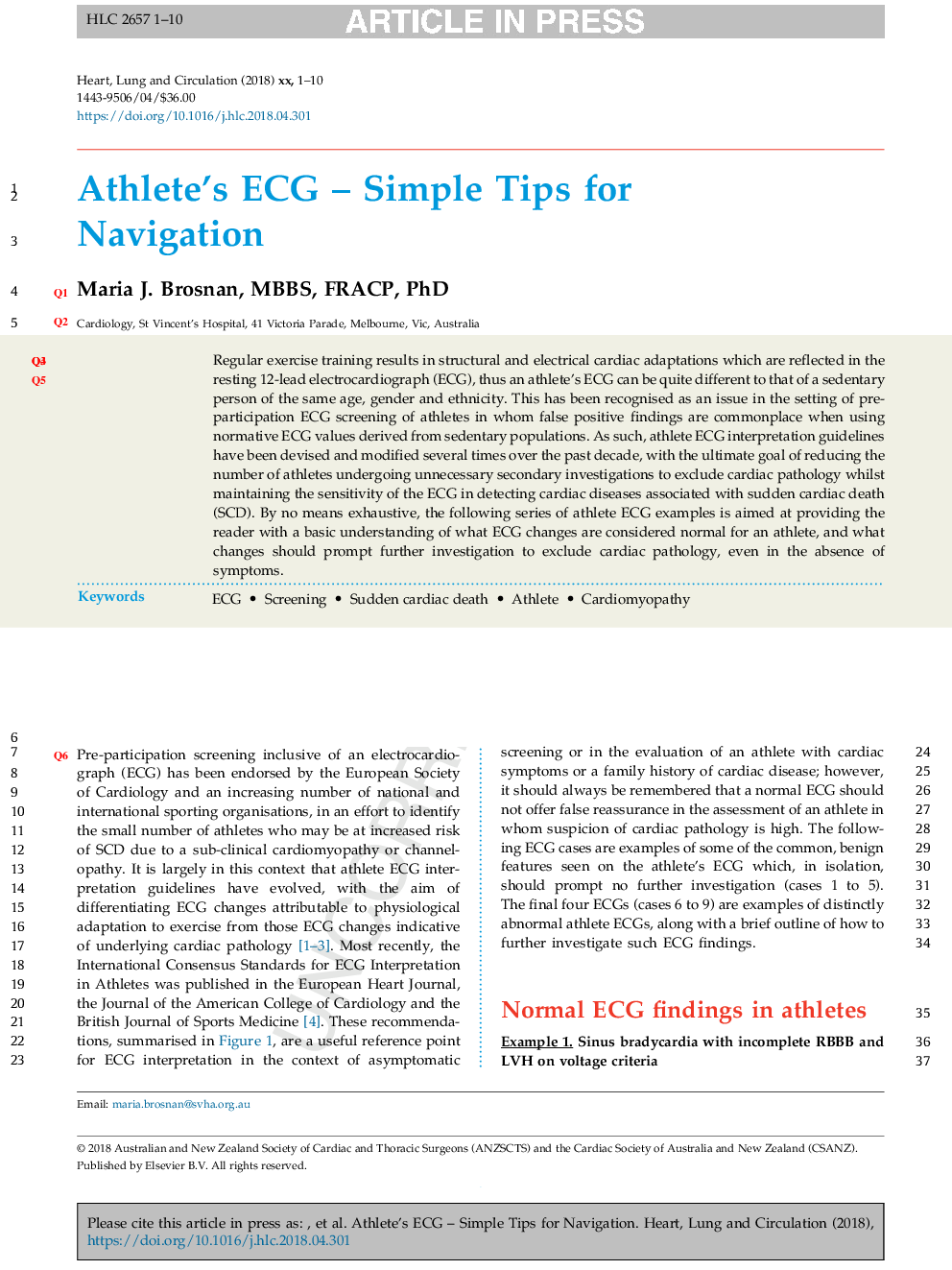| Article ID | Journal | Published Year | Pages | File Type |
|---|---|---|---|---|
| 8659653 | Heart, Lung and Circulation | 2018 | 10 Pages |
Abstract
Regular exercise training results in structural and electrical cardiac adaptations which are reflected in the resting 12-lead electrocardiograph (ECG), thus an athlete's ECG can be quite different to that of a sedentary person of the same age, gender and ethnicity. This has been recognised as an issue in the setting of pre-participation ECG screening of athletes in whom false positive findings are commonplace when using normative ECG values derived from sedentary populations. As such, athlete ECG interpretation guidelines have been devised and modified several times over the past decade, with the ultimate goal of reducing the number of athletes undergoing unnecessary secondary investigations to exclude cardiac pathology whilst maintaining the sensitivity of the ECG in detecting cardiac diseases associated with sudden cardiac death (SCD). By no means exhaustive, the following series of athlete ECG examples is aimed at providing the reader with a basic understanding of what ECG changes are considered normal for an athlete, and what changes should prompt further investigation to exclude cardiac pathology, even in the absence of symptoms.
Related Topics
Health Sciences
Medicine and Dentistry
Cardiology and Cardiovascular Medicine
Authors
Maria J. MBBS, FRACP, PhD,
